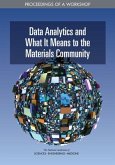Chapter 1 - Basics of R, Chapter 2 - Data Types in R , Chapter 3 - Data Preparation. Chapter 4 - Graphics using R, Chapter 5 - Statistical Analysis Using R, Chapter 6 - Data Mining Using R, Chapter 7 - Case Studies. Huge volumes of data are being generated by many sources like commercial enterprises, scientific domains and general public daily. According to a recent research, data production will be 44 times greater in 2020 than it was in 2010. Data being a vital resource for business organizations and other domains like education, health, manufacturing etc., its management and analysis is becoming increasingly important. This data, due to its volume, variety and velocity, often referred to as Big Data, also includes highly unstructured data in the form of textual documents, web pages, graphical information and social media comments. Since Big Data is characterised by massive sample sizes, high dimensionality and intrinsic heterogeneity, traditional approaches to data management, visualisation and analytics are no longer satisfactorily applicable. There is therefore an urgent need for newer tools, better frameworks and workable methodologies for such data to be appropriately categorised, logically segmented, efficiently analysed and securely managed. This requirement has resulted in an emerging new discipline of Data Science that is now gaining much attention with researchers and practitioners in the field of Data Analytics.
Bitte wählen Sie Ihr Anliegen aus.
Rechnungen
Retourenschein anfordern
Bestellstatus
Storno








